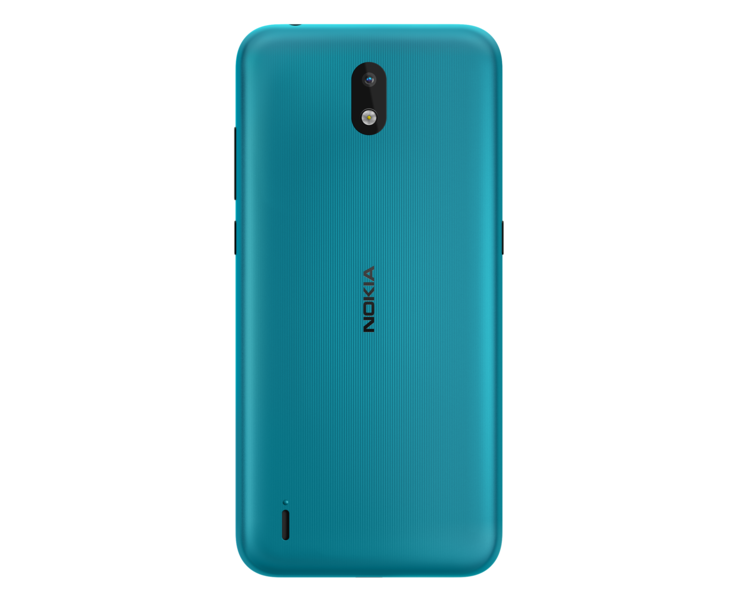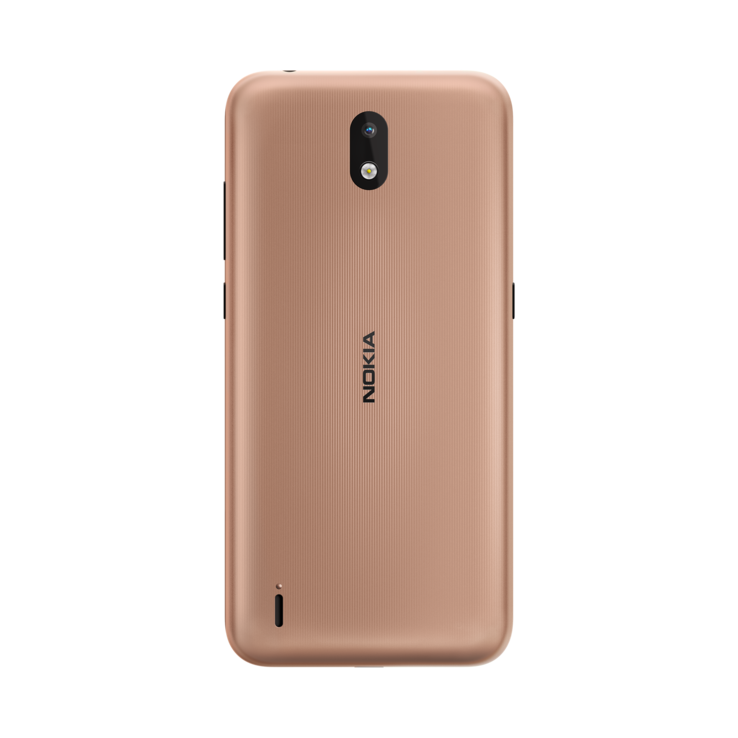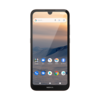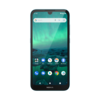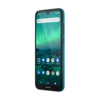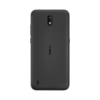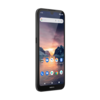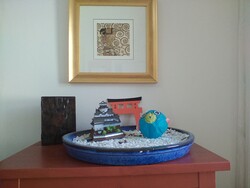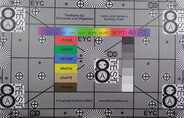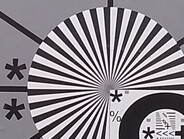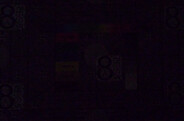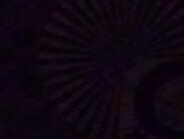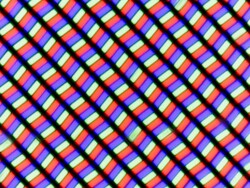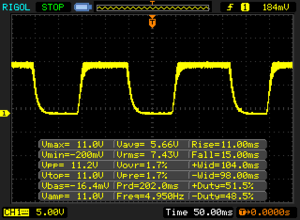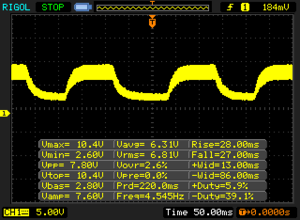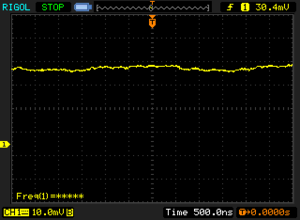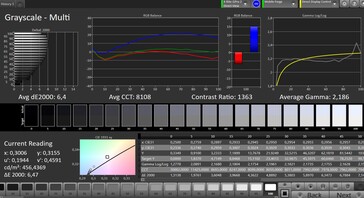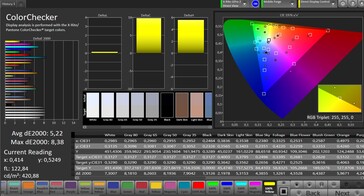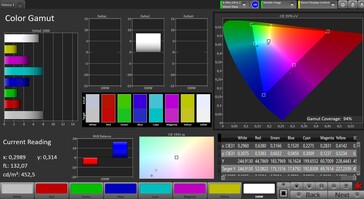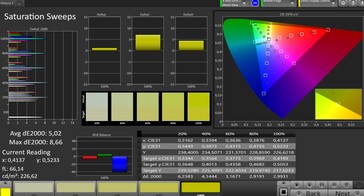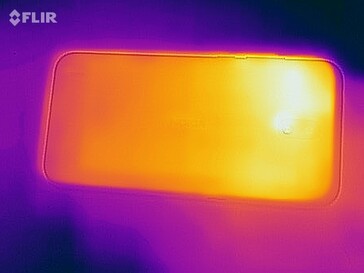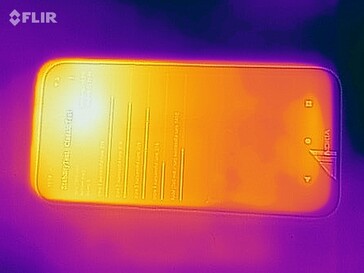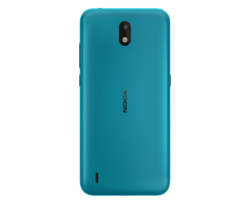Nokia 1.3 Smartphone Review – Small Nokia Mobile Phone with Weaknesses
Comparison Devices
Bewertung | Rating Version | Datum | Modell | Gewicht | Laufwerk | Groesse | Aufloesung | Preis ab |
|---|---|---|---|---|---|---|---|---|
| 68.3 % v7 (old) | v7 (old) | 05 / 2020 | Nokia 1.3 SD 215, Adreno 308 | 155 g | 16 GB eMMC Flash | 5.71" | 1520x720 | |
| 74.8 % v7 (old) | v7 (old) | 05 / 2020 | Motorola Moto E6s Helio P22 MT6762, PowerVR GE8320 | 160 g | 32 GB eMMC Flash | 6.10" | 1560x720 | |
| 75.3 % v7 (old) | v7 (old) | 01 / 2020 | Huawei Y6s Helio P35 MT6765, PowerVR GE8300 | 150 g | 32 GB eMMC Flash | 6.09" | 1560x720 | |
| 74.1 % v7 (old) | v7 (old) | 12 / 2019 | LG K40S Helio P22 MT6762, PowerVR GE8320 | 173 g | 32 GB eMMC Flash | 6.10" | 1560x720 |
Case, Equipment and Operation - Current Software
The Nokia 1.3 is a handy smartphone that is also relatively light at 155 grams. The back can be removed, then you get access to the SIM slots and the replaceable battery. However, there is no notch and we found it very difficult to remove the back in the test. So, if you want to change the battery regularly, you should get appropriate tools or have very strong fingernails.
The simple plastic case is nothing special, but thanks to the matt backside it is at least not susceptible to fingerprints. The three available colors light brown, green blue and black should offer something for everyone.
In keeping with the price, the smartphone is simply equipped, offering only the most necessary with 16 GB mass storage and 1 GB RAM. If you pay a few euros more, you get twice as much mass storage, for example with the Motorola Moto E6s.
When it comes to WLAN, you can only rely on WiFi 4. The speed is average.
Android 10 Go is used as software, and during our test the security patches were updated to a current level.
The touchscreen itself is neat to use, and even small hands should be able to cope due to its small dimensions. Nokia only offers face recognition as an unlock method, but it didn't work in our test despite repeated face scanning.
| Networking | |
| iperf3 transmit AX12 | |
| Huawei Y6s | |
| LG K40S | |
| Nokia 1.3 | |
| Motorola Moto E6s | |
| iperf3 receive AX12 | |
| Huawei Y6s | |
| LG K40S | |
| Nokia 1.3 | |
| Motorola Moto E6s | |
Cameras - Blurred Photos
The simple 8 megapixel camera quickly gets problems with areas that are too light or too dark and also takes pictures with little detail, even in good light. In dark situations with high contrasts, the image content is still recognizable, but details are very blurred. In almost absolute darkness, the optics can hardly see anything. The test image in the lab looks very pale in some areas.
The front camera makes passable selfies, but in detail the pictures quickly look very grainy. Overall, there are better cameras even in this price range.
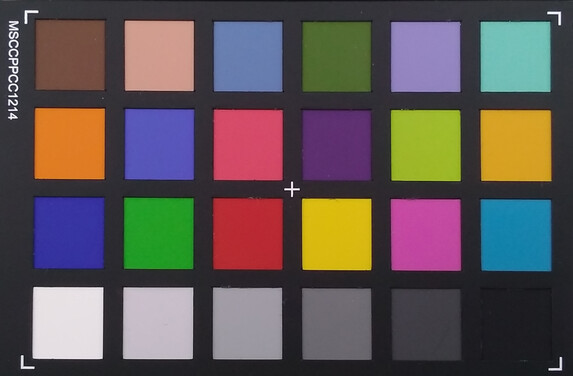
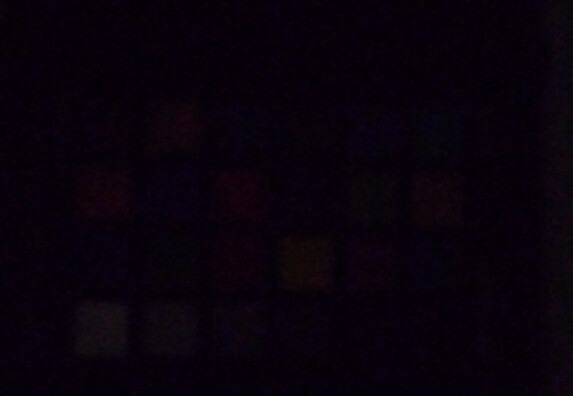
Display - Moderately Bright
The IPS screen is reasonably bright, but the differences in brightness are clearly visible in different areas of the screen. The contrast is at best mediocre, so that colors look quite pale. We notice a visible blue cast during our measurements with the software CalMAN and the spectrophotometer. The color deviations are still acceptable.
It is pleasing that we do not notice any PWM flickering, the reaction times are not very fast, but at this level of performance they are also not decisive.
| |||||||||||||||||||||||||
Brightness Distribution: 83 %
Center on Battery: 456 cd/m²
Contrast: 1382:1 (Black: 0.33 cd/m²)
ΔE ColorChecker Calman: 5.22 | ∀{0.5-29.43 Ø4.77}
ΔE Greyscale Calman: 6.4 | ∀{0.09-98 Ø5}
94% sRGB (Calman 2D)
Gamma: 2.186
CCT: 8108 K
| Nokia 1.3 IPS, 1520x720, 5.7" | Motorola Moto E6s IPS, 1560x720, 6.1" | Huawei Y6s IPS, 1560x720, 6.1" | LG K40S IPS, 1560x720, 6.1" | |
|---|---|---|---|---|
| Response Times | -4% | -11% | -3% | |
| Response Time Grey 50% / Grey 80% * (ms) | 55 ? | 64 ? -16% | 54 ? 2% | 50 ? 9% |
| Response Time Black / White * (ms) | 26 ? | 24 ? 8% | 32 ? -23% | 30 ? -15% |
| PWM Frequency (Hz) | 100 ? | 100 ? | ||
| Screen | 17% | -17% | 9% | |
| Brightness middle (cd/m²) | 456 | 488 7% | 424 -7% | 487 7% |
| Brightness (cd/m²) | 406 | 481 18% | 397 -2% | 471 16% |
| Brightness Distribution (%) | 83 | 95 14% | 85 2% | 91 10% |
| Black Level * (cd/m²) | 0.33 | 0.25 24% | 0.35 -6% | 0.28 15% |
| Contrast (:1) | 1382 | 1952 41% | 1211 -12% | 1739 26% |
| Colorchecker dE 2000 * | 5.22 | 5.02 4% | 6.45 -24% | 5.56 -7% |
| Colorchecker dE 2000 max. * | 8.38 | 8.99 -7% | 12.76 -52% | 9.64 -15% |
| Greyscale dE 2000 * | 6.4 | 4.4 31% | 8.5 -33% | 5.2 19% |
| Gamma | 2.186 101% | 2.252 98% | 2.231 99% | 2.124 104% |
| CCT | 8108 80% | 7841 83% | 9108 71% | 7932 82% |
| Total Average (Program / Settings) | 7% /
12% | -14% /
-16% | 3% /
7% |
* ... smaller is better
Display Response Times
| ↔ Response Time Black to White | ||
|---|---|---|
| 26 ms ... rise ↗ and fall ↘ combined | ↗ 11 ms rise | |
| ↘ 15 ms fall | ||
| The screen shows relatively slow response rates in our tests and may be too slow for gamers. In comparison, all tested devices range from 0.1 (minimum) to 240 (maximum) ms. » 61 % of all devices are better. This means that the measured response time is worse than the average of all tested devices (20.2 ms). | ||
| ↔ Response Time 50% Grey to 80% Grey | ||
| 55 ms ... rise ↗ and fall ↘ combined | ↗ 28 ms rise | |
| ↘ 27 ms fall | ||
| The screen shows slow response rates in our tests and will be unsatisfactory for gamers. In comparison, all tested devices range from 0.165 (minimum) to 636 (maximum) ms. » 91 % of all devices are better. This means that the measured response time is worse than the average of all tested devices (31.6 ms). | ||
Screen Flickering / PWM (Pulse-Width Modulation)
| Screen flickering / PWM not detected | |||
In comparison: 53 % of all tested devices do not use PWM to dim the display. If PWM was detected, an average of 8081 (minimum: 5 - maximum: 343500) Hz was measured. | |||
Performance, Emissions and Battery Life - Very Little Power
Qualcomm's small Snapdragon 215 barely offers enough performance for a smooth operation of Android 10 Go, and there is also very little RAM with 1 GB. Other smartphones in our comparison deliver significantly more system power. Even the simple graphics card is only suitable for the most necessary, but internet videos in 720p can be watched smoothly.
In everyday life you have to expect jerkiness and waiting times when you call up apps or even just the system settings.
The warming up under load is quite noticeable, and can be unpleasant in summer.
The small loudspeaker on the back doesn't get very loud, but isn't too high-burdened either, so that you can listen to music. If you want to use the 3.5mm port or Bluetooth, you'll get clean sound on external audio devices.
In terms of battery life, the Nokia 1.3 can score points on the one hand with the fact that it lasted 15:06 hours in our WLAN test, which is a very good performance. At the same time, the battery is still replaceable, even though the back of the smartphone is very difficult to detach. Charging takes its time, and you should plan 2-3 hours for this.
| PCMark for Android | |
| Work performance score (sort by value) | |
| Nokia 1.3 | |
| Motorola Moto E6s | |
| Huawei Y6s | |
| LG K40S | |
| Average Qualcomm Snapdragon 215 (n=1) | |
| Work 2.0 performance score (sort by value) | |
| Nokia 1.3 | |
| Motorola Moto E6s | |
| Huawei Y6s | |
| LG K40S | |
| Average Qualcomm Snapdragon 215 (n=1) | |
| GFXBench (DX / GLBenchmark) 2.7 | |
| 1920x1080 T-Rex Offscreen (sort by value) | |
| Nokia 1.3 | |
| LG K40S | |
| Average Qualcomm Snapdragon 215 (n=1) | |
| Average of class Smartphone (22 - 954, n=153, last 2 years) | |
| T-Rex Onscreen (sort by value) | |
| Nokia 1.3 | |
| LG K40S | |
| Average Qualcomm Snapdragon 215 (n=1) | |
| Average of class Smartphone (12 - 166, n=153, last 2 years) | |
| GFXBench 3.0 | |
| 1920x1080 1080p Manhattan Offscreen (sort by value) | |
| Nokia 1.3 | |
| LG K40S | |
| Average Qualcomm Snapdragon 215 (n=1) | |
| Average of class Smartphone (12 - 606, n=154, last 2 years) | |
| on screen Manhattan Onscreen OGL (sort by value) | |
| Nokia 1.3 | |
| LG K40S | |
| Average Qualcomm Snapdragon 215 (n=1) | |
| Average of class Smartphone (18 - 166, n=155, last 2 years) | |
| Nokia 1.3 | Motorola Moto E6s | Huawei Y6s | LG K40S | Average 16 GB eMMC Flash | Average of class Smartphone | |
|---|---|---|---|---|---|---|
| AndroBench 3-5 | 19% | 15% | 5% | -40% | 1436% | |
| Sequential Read 256KB (MB/s) | 284.8 | 275 -3% | 263.2 -8% | 272 -4% | 164.5 ? -42% | 2235 ? 685% |
| Sequential Write 256KB (MB/s) | 48.5 | 103.5 113% | 118 143% | 84.5 74% | 43 ? -11% | 1871 ? 3758% |
| Random Read 4KB (MB/s) | 48.7 | 69.4 43% | 46.7 -4% | 53.2 9% | 21.7 ? -55% | 297 ? 510% |
| Random Write 4KB (MB/s) | 38.6 | 17.7 -54% | 18.6 -52% | 18.5 -52% | 8.08 ? -79% | 343 ? 789% |
| Sequential Read 256KB SDCard (MB/s) | 76.1 ? | 82.3 ? 8% | 80.9 ? 6% | 79.3 ? 4% | 59.1 ? -22% | |
| Sequential Write 256KB SDCard (MB/s) | 59 ? | 63.5 ? 8% | 60.6 ? 3% | 57.8 ? -2% | 39.8 ? -33% |
Temperature
(±) The maximum temperature on the upper side is 44.5 °C / 112 F, compared to the average of 35.2 °C / 95 F, ranging from 21.9 to 247 °C for the class Smartphone.
(±) The bottom heats up to a maximum of 44.4 °C / 112 F, compared to the average of 34 °C / 93 F
(±) In idle usage, the average temperature for the upper side is 33.2 °C / 92 F, compared to the device average of 32.9 °C / 91 F.
Speakers
Nokia 1.3 audio analysis
(±) | speaker loudness is average but good (78.8 dB)
Bass 100 - 315 Hz
(-) | nearly no bass - on average 59.3% lower than median
(+) | bass is linear (0% delta to prev. frequency)
Mids 400 - 2000 Hz
(-) | nearly no mids - on average 59.3% lower than median
(+) | mids are linear (0% delta to prev. frequency)
Highs 2 - 16 kHz
(-) | nearly no highs - on average 59.3% lower than median
(+) | highs are linear (0% delta to prev. frequency)
Overall 100 - 16.000 Hz
(-) | overall sound is not linear (127.5% difference to median)
Compared to same class
» 97% of all tested devices in this class were better, 3% similar, 0% worse
» The best had a delta of 11%, average was 35%, worst was 134%
Compared to all devices tested
» 99% of all tested devices were better, 1% similar, 0% worse
» The best had a delta of 4%, average was 24%, worst was 134%
Motorola Moto E6s audio analysis
(+) | speakers can play relatively loud (82.3 dB)
Bass 100 - 315 Hz
(-) | nearly no bass - on average 66.5% lower than median
(+) | bass is linear (0% delta to prev. frequency)
Mids 400 - 2000 Hz
(-) | nearly no mids - on average 66.5% lower than median
(+) | mids are linear (0% delta to prev. frequency)
Highs 2 - 16 kHz
(-) | nearly no highs - on average 66.5% lower than median
(+) | highs are linear (0% delta to prev. frequency)
Overall 100 - 16.000 Hz
(-) | overall sound is not linear (121.9% difference to median)
Compared to same class
» 91% of all tested devices in this class were better, 7% similar, 2% worse
» The best had a delta of 11%, average was 35%, worst was 134%
Compared to all devices tested
» 97% of all tested devices were better, 2% similar, 1% worse
» The best had a delta of 4%, average was 24%, worst was 134%
Battery Life
| Nokia 1.3 3000 mAh | Motorola Moto E6s 3000 mAh | Huawei Y6s 3020 mAh | LG K40S 3500 mAh | Average of class Smartphone | |
|---|---|---|---|---|---|
| Battery Runtime | |||||
| WiFi Websurfing (h) | 15.1 | 13.4 -11% | 12.4 -18% | 14.3 -5% | 19.3 ? 28% |
Pros
Cons
Verdict – A Recommendation Is Difficult
The Nokia 1.3 made a bad impression right at the beginning of our test: The back has no notch for the fingernail and is very difficult to open even with special tools. But the replaceable battery is actually one of the highlights of the device. The fact that there is still a dedicated microSD slot is also pleasing and the battery life is also a good argument for the cheap and handy mobile phone. Nokia is also currently making every effort to provide updates and the latest security patches for even its cheapest smartphone.
However, the fact that the face recognition lets us down and the performance is only sufficient for the very fewest situations is not so nice. The camera with its blurred pictures is also more suitable as a stopgap.
The Nokia 1.3 shouldn't be bought for around 100 euro, as there are better alternatives at a similar price. But if the smartphone should become cheaper, you can take a look at it if you want the absolute best battery life and use the smartphone very little.
Nokia 1.3
- 05/17/2020 v7 (old)
Florian Schmitt


